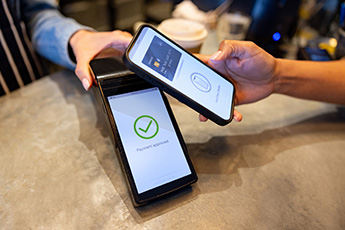Researchers at Ohio State University created a computer program that took 5,000 photos of people making faces in response to statements like "you smell a bad odor." They found humans can make 21 different facial expressions, so gone are the days of simple emotions, it seems.
In the world of banking, some may say a personal way of relating to customers is soon gone too. For many years, several community banks avoided leveraging digital banking in favor of relationship banking. That still makes some sense, but digital and human activities have evolved so bankers need to as well.
Consider a community bank in VA for example that avoided digital banking. Its legendary founder preferred face-to-face communication. But, when he passed in 2017, his successor initiated a fresh approach. Information technology systems were upgraded and finally this year, an online and mobile banking reincarnation of the founder emerged (the name of their online platform was the name of the founder)...with great success.
Don't get us wrong. The bank which was also introduced on the NASDAQ this year, boasted a winning formula for decades. It was created in 1974, relying on a low cost, low margin model. It didn't spend a lot on marketing and rather relied on the founder's innate flair to sign up new customers. The bank survived the 2008 financial crisis untouched and it is today one of the top 10 financial institutions in VA. Yet, with the times, progress was still needed and its online platform provided that.
According to the 2018 survey of the conference of State Bank Supervisors (CSBS), 88% of community banks offer mobile banking, 75% have an electronic bill payment option and 77% practice remote deposit capture.
There are many other examples of community institutions going digital, of course. In CO, "seamless interactions with customers," is one community bank's motto. In HI, self-service capabilities are front and center for another. Still another community bank in CA not only survived a massive wildfire, but did it partly by text messaging with employees and customers.
Digital is becoming an essential part of today's business activities. How else could banks send associates and customers in the field information needed to sign digitally savvy customers? How else could the same bank guarantee easy online access to accounts? How could banks convince commercial borrowers to move all their operating accounts to the bank, if the CFO hadn't any online channels at their fingertips?
The VA community bank above may be a bit of a latecomer to the table, but it is definitely an enthusiastic one. Since its February launch, more than 10k customers are using its digital banking. Some tips for banks similarly new to digital banking:
Learn from earlier adopters. These banks have lessons you can leverage and that allow you to possibly skip steps or shorten the implementation time.
Start small. You don't need to do it all. Just start with one or two elements such as account balance and fraud alerts. See how those work out and add on from there.
Keep talking to customers. There is a plethora of digital products out there. Make sure you provide the ones that are the most sought-after for your customers.




